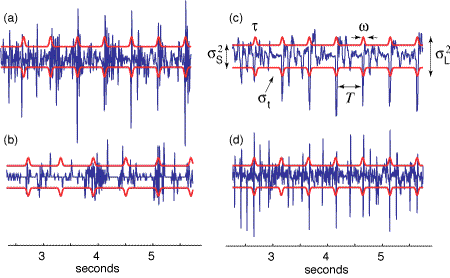|
|
Chapter 8: Automated Rhythm Analysis |
Just as there are two kinds of notations for rhythmic phenomenon (the symbolic and the literal), there are two ways to approach the detection of rhythms; from a high level symbolic representation (such as an event list, musical score, or standard MIDI file) or from a literal representation such as a direct encoding in a .wav file. Both aspire to understand and decompose rhythmic phenomena, and both exploit a variety of technologies such as the transforms, adaptive oscillators, and statistical techniques of Chapters 5 - 7. This chapter begins with a discussion of the rhythmic parsing of symbolic sequences and then incorporates the perceptually motivated feature vectors of Chapter 4 to create viable beat detection algorithms for audio. The performance of the various methods is compared in a variety of musical passages.
| 8.1 Analysis From a Musical Score: La Marseillaise 8.1.1 Rule-Based Approaches 8.1.2 Transform Techniques 8.1.3 Statistical Methods 8.1.4 Adaptive Oscillators 8.2 MIDI Beat Tracking 8.2.1 Adaptive Oscillators 8.2.2 Statistical Methods 8.3 Audio Beat Tracking 8.3.1 Transform Techniques 8.3.2 Statistical Beat Tracking 8.3.3 Beat Tracking Using Adaptive Oscillators 8.4 Summary |
 |